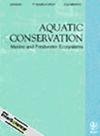Satellite Tracking and Photographic-Identification as Connectivity-Based Tools Towards Conservation Planning of Pilot Whales
Abstract
Identifying biogeographical patterns and important biological (blue) corridors can greatly contribute to conservation planning. Yet, this is particularly challenging when addressing pelagic species. In this study, satellite telemetry and photographic-identification data of short-finned pilot whales (Globicephala macrorhynchus) were used to identify preferred areas and pathways in the Macaronesia biogeographical region, namely between Madeira and two regions in the Canary Islands, the Western (WCI, La Palma and El Hierro) and the Central (CCI, Tenerife and La Gomera). Home-range and time-varying move persistence analyses from tracking data of four whales that moved between both archipelagos over 578 days revealed preferred areas in Madeira and the WCI, new connectivity pathways and the importance of both regions for area-restricted behaviours. These findings were corroborated by a high number (n = 71) of photographic matches between Madeira (catalogue of 1276 individuals) and the WCI (456 individuals), compared to only four between Madeira and the CCI (717 individuals). The high linkage of the WCI with Madeira and the CCI (n = 48) suggests that the WCI constitute a key habitat for potential mixing of pilot whales from different groups. This study emphasizes that a combined methodological approach provides robust baseline information for pilot whales' conservation management, which could be valuable for other scenarios and species. Furthermore, shown connectivity patterns contribute to broadening our knowledge on potential blue corridors in the eastern North Atlantic and highlight the importance of considering wide and international geographic areas for conservation planning of highly mobile marine species.

 求助内容:
求助内容: 应助结果提醒方式:
应助结果提醒方式:


